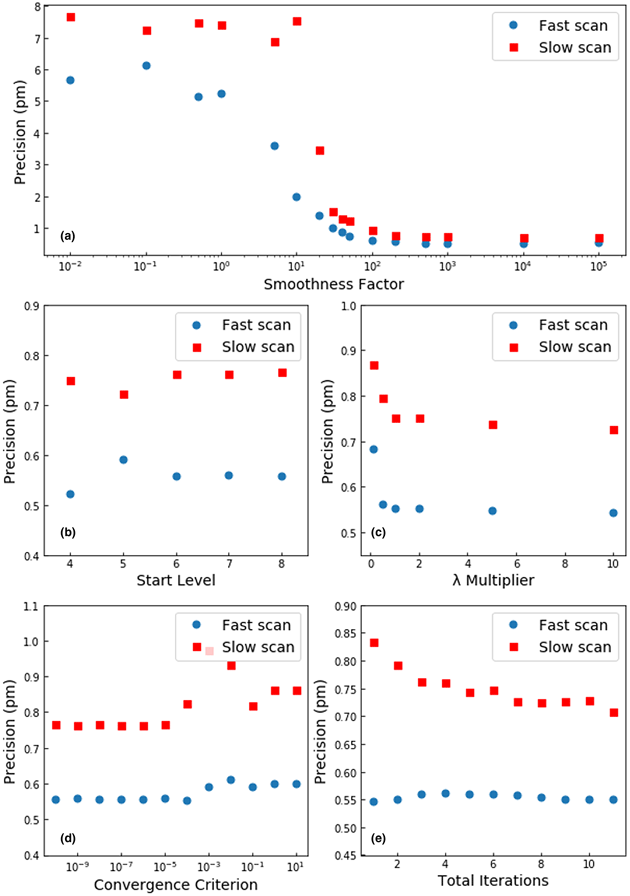Article contents
Optimizing Nonrigid Registration for Scanning Transmission Electron Microscopy Image Series
Published online by Cambridge University Press: 23 November 2020
Abstract

Achieving sub-picometer precision measurements of atomic column positions in high-resolution scanning transmission electron microscope images using nonrigid registration (NRR) and averaging of image series requires careful optimization of experimental conditions and the parameters of the registration algorithm. On experimental data from SrTiO3 [100], sub-pm precision requires alignment of the sample to the zone axis to within 1 mrad tilt and sample drift of less than 1 nm/min. At fixed total electron dose for the series, precision in the fast scan direction improves with shorter pixel dwell time to the limit of our microscope hardware, but the best precision along the slow scan direction occurs at 6 μs/px dwell time. Within the NRR algorithm, the “smoothness factor” that penalizes large estimated shifts is the most important parameter for sub-pm precision, but in general, the precision of NRR images is robust over a wide range of parameters.
Keywords
- Type
- Software and Instrumentation
- Information
- Copyright
- Copyright © The Author(s), 2020. Published by Cambridge University Press
References
- 3
- Cited by





